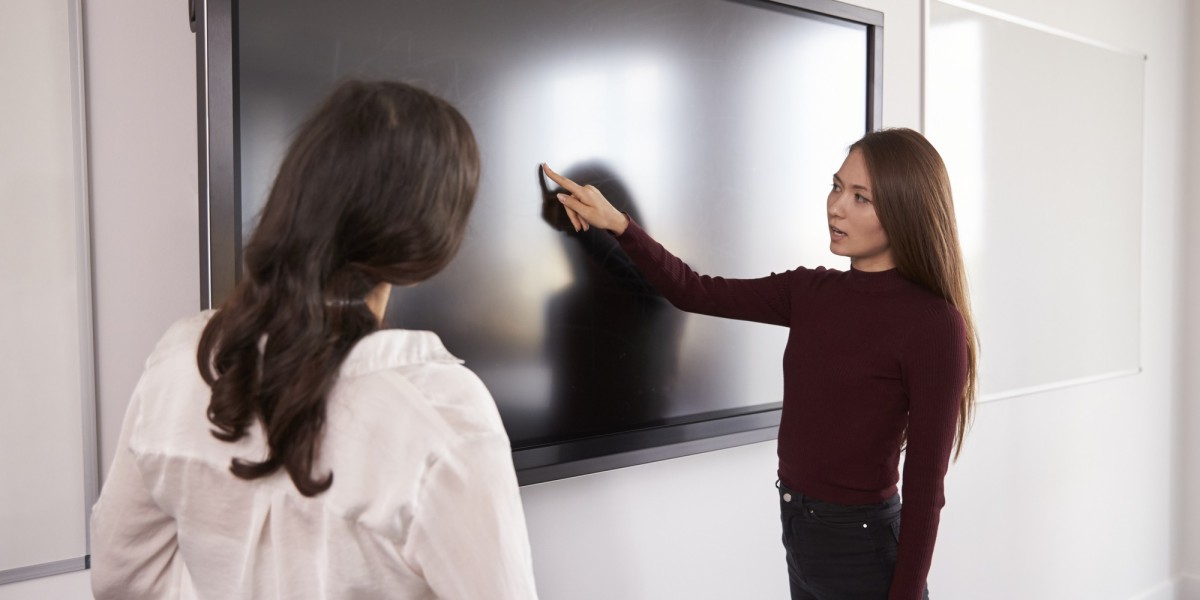Introduction:
Education is constantly evolving, and technology plays a vital role in enhancing the learning experience. One such technology that has revolutionized classrooms is interactive whiteboards. These digital tools have transformed traditional teaching methods by providing interactive and engaging learning environments. In this blog post, we will explore the impact of interactive whiteboards on education and how they have revolutionized the way students learn and teachers teach.
I. Enhanced Visual Learning:
Interactive whiteboards offer a dynamic visual learning experience. Teachers can display educational content, images, videos, and interactive lessons, making abstract concepts more tangible and engaging for students. Visual aids and multimedia elements help students grasp complex ideas more effectively, improving their understanding and retention of the material. The interactive nature of whiteboards encourages student participation, making the learning process more immersive and enjoyable.
II. Increased Student Engagement:
Interactive whiteboards actively involve students in the learning process. With touch-screen capabilities, students can directly interact with the content, solving problems, manipulating objects, and collaborating with their peers. This hands-on approach promotes active learning, critical thinking, and problem-solving skills. By encouraging student engagement, interactive whiteboards create a more inclusive and participatory classroom environment.
III. Collaboration and Group Work:
Interactive whiteboards facilitate collaboration and group work among students. With features like split-screen displays and interactive software, multiple students can work together simultaneously on projects or presentations. This promotes teamwork, communication, and the development of essential interpersonal skills. Collaborative activities foster a sense of community within the classroom, preparing students for real-world collaboration in their future endeavors.
IV. Customizable Learning Experience:
Interactive whiteboards offer a customizable learning experience to cater to individual student needs. Teachers can adapt their teaching methods, content, and pace based on student progress and understanding. The flexibility of interactive whiteboards allows teachers to differentiate instruction, providing personalized learning pathways for students with varying abilities and learning styles. This individualized approach promotes student success and academic growth.
V. Access to Rich Educational Resources:
Interactive whiteboards provide access to a vast array of educational resources and digital content. Teachers can integrate online materials, educational websites, and interactive educational software into their lessons, enriching the learning experience. With just a few clicks, teachers can access educational videos, virtual simulations, and interactive quizzes, enhancing the depth and breadth of their instructional materials. The availability of diverse resources promotes a multidimensional learning experience and keeps students engaged.
VI. Real-Time Assessment and Feedback:
Interactive whiteboards enable real-time assessment and feedback. Teachers can use interactive quizzes, polls, and surveys to gauge student understanding instantly. This immediate feedback allows teachers to adjust their teaching strategies on the spot, addressing misconceptions and reinforcing key concepts. The ability to track student progress and provide timely feedback enhances the learning process and supports students' individual growth.
VII. Bridging Distance and Remote Learning:
The COVID-19 pandemic highlighted the importance of technology in education, particularly in facilitating remote learning. Interactive whiteboards played a crucial role in bridging the distance between teachers and students during remote learning periods. Teachers could deliver live lessons, share screens, and engage with students in real-time, replicating the interactive classroom experience. Interactive whiteboards provide a seamless transition between in-person and remote learning, ensuring continuity in education.
Conclusion:
Interactive whiteboards have had a transformative impact on education. By increasing student engagement, promoting collaboration, and offering a customizable learning experience, and enhancing learning, interactive whiteboards have revolutionized the way students learn and teachers teach. They provide access to rich educational resources, enable real-time assessment and feedback, and bridge the gap between in-person and remote learning. As technology continues to advance, interactive whiteboards will undoubtedly play a vital role in shaping the future of education, creating interactive and immersive learning environments that foster student success and drive academic achievement.








